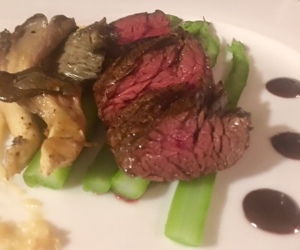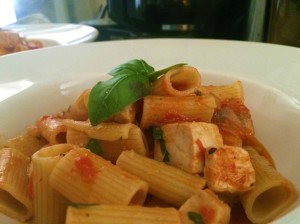What is decanting? Simply put, it means transferring (decanting) the contents of a wine bottle into another receptacle (the decanter) before serving. It may sound silly (how can pouring wine from one vessel into another make it taste better?), but it works.
Wine geeks love to sit around for hours and debate the pros and cons of this procedure, but I’m confident — based on my experience of opening, decanting and tasting hundreds of thousands of bottles of wine — that careful decanting can improve most any wine.
Why do we decant?
Obviously, it’s not the mere act of shifting liquid from one container to another that accounts for the magic of decanting. Rather, when you decant a bottle of wine, two things happen. First, slow and careful decanting allows wine (particularly older wine) to separate from its sediment, which, if left mixed in with the wine, will impart a very noticeable bitter, astringent flavor. Second, when you pour wine into a decanter, the resulting agitation causes the wine to mix with oxygen, enabling it to develop and come to life at an accelerated pace (this is particularly important for younger wine).
How to decant
Decanting a young wine (one with no sediment) is easy: Just pour it into the decanter. Let it sit for twenty minutes or so before you serve it, and you’ll likely notice a dramatic increase in subtlety and complexity. If you have the luxury of time, continue tasting the wine over a period of hours. It may keep evolving and improving. And don’t let anybody tell you that you should only decant certain types of wine (Bordeaux) and not others (Burgundy). I recommend decanting everything — even white wine, if you feel like it.
Decanting older wine (wine with sediment) requires a bit more finesse. For starters, the wine has had plenty of time to age on its own, so it doesn’t need any artificial boost. You may even ruin it by overexposing it to oxygen before serving. Thus, you should decant older wine immediately before serving, before it begins to change.
In addition, there’s the issue of how best to separate a wine from its sediment. One procedure, which I often see in wine books, is to stand the wine bottle upright for a few days before opening it, so that all the sediment collects at the bottom. I call this the Peking duck approach, and it’s great if you plan your menus several days ahead of time, but how often has that scenario occurred in your home? It never happens in mine, and it surely never happens at my place of business — a restaurant — where people often decide what they’re drinking about thirty seconds before I have to open it.
To decant on the fly, without warning, you’ll need two pieces of equipment: a light source (either a candle or a small flashlight) and a wine cradle. Gently place the wine bottle into the cradle so that it’s just shy of horizontal (about a twenty degree angle). Now open the bottle. Yes, you can do it; you’ll be surprised how far you can rotate a bottle without any wine actually coming out. This is the genius of the long-necked wine bottle: If the bottle’s mouth remains above the level of the liquid, a spill is physically impossible. Practice a little, and you’ll be opening wine on its side like a pro in no time.
Next, after cleaning the bottle’s neck with a cloth, begin rotating the cradle slowly to pour the wine into the decanter. Keep the light shining on the neck, and watch for sediment. When you get toward the end of the bottle, you’ll start to see sediment creep up toward the neck. Stop pouring as soon as that happens. The wine you’ve just decanted will be clean and clear, with a bright and beautiful bouquet, and the sediment will be left behind.
Feel free to take the wine left in the bottle (usually about a glass worth) and strain it into a separate container, using cheesecloth or a coffee filter. It won’t taste the same as the first run pour. However, it is often very palatable once cleaned up and, if nothing else, tasting it is a good exercise for one’s palate.
Occasionally, you’ll come across a young wine with sediment (well-made, unfiltered California Zinfandels often exhibit this trait). If this happens, follow the procedures for decanting older wines, but also allow a little extra time for the wine to breathe and develop.
Choosing a decanter
The principles of choosing stemware also apply to decanters. A clear, crystal decanter allows you to see the wine at its best; overly decorated or colored decanters obscure the wine. Moreover, just as with your stemware, be sure that your decanter is spotless and free from any musty cupboard aromas. Rinse it with mineral water to remove any residual chlorine odor. And never clean your decanter with detergent, because the shape of a decanter makes it very difficult to get the soapy residue out. Instead, use a mixture of crushed ice and coarse salt — they’ll remove any residual wine without leaving behind any aroma of their own.

















